Notes: Heaton Mersey station opened on 1st January 1880 as part of the Manchester South District Railway that connected Manchester Central to Stockport Tiviot Dale.
 |
From as early as 1864 a number of schemes had been proposed to create a line from Manchester through Didsbury and down towards Stockport. In 1873 the Manchester South District Railway (MSDR) obtained an Act to create a line from Manchester via Didsbury to Alderley. A year later, on 30th June 1874, the MDSR obtained a variation Act which proposed that |
the line would make a connection with the Cheshire Lines Railway’s (CLC) route between Woodley and Skelton Junction at Heaton Mersey. However, despite obtaining the Act, the MDSR was unable to start work on the construction of the line due to financial difficulties. At this point the CLC became interested in purchasing the MDSR as they saw value in the projected route to Manchester. Unfortunately one of the CLC partners, the Great Northern Railway (GNR), did not see any value in the route so the CLC was not able to proceed with its idea.
| The other two CLC partners, the Manchester, Sheffield, & Lincolnshire Railway (MSLR) and the Midland Railway (MR), decided to press ahead and purchase the MSDR. The MR in particular wanted a route of its own into Manchester so that it was not beholden to other companies. Since 1867 its train services from the south had had to use Manchester |
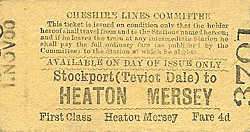 |
London Road Station which was a joint London and North Western Railway (LNWR) and MSLR station. A bill was granted by Parliament on 11th August 1876 which authorised the MR and MSLR to take over the MSDR and build the line from Heaton Mersey to Manchester. Within a month of the Act being signed the MSLR got cold feet and decided that they did not want to proceed. The MR was desperate to create a route of its own to Manchester. To make matters worse it had been given notice to quit operating to London Road Station. The MR went back to Parliament, and on 12th July 1877 they were given authority to take over the MSDR and build the line.
 |
Work began on the line in 1878 and Heaton Mersey was to be its most southerly station. The junction that connected the South District line to the CLC giving access to Stockport Tiviot Dale was less than a mile to the south of the station site. The station was located in a cutting and was provided with two platforms. The main station building was located on the southbound platform. It was brick-built in a style that had been used on the CLC main line of 1873 between Liverpool and Manchester. The |
building was mostly single storey but included a two storey station master’s house at its southern end. An awning provided protection from the elements. Booking facilities, a parcels office, ladies’ and gentlemen’s waiting rooms and toilets were all accommodated in the building. An iron footbridge gave access to the northbound platform on which stood a brick-built single storey waiting room which also had an awning. Goods facilities were located to the south of the station.
When the station opened on 1st January 1880 it was served by trains that called at all stations between Manchester Central and Manchester London Road via Stockport Tiviot Dale. Fourteen trains ran in each direction and, although Heaton Mersey was one of the quieter stations on the line, it was still very busy. The local service was known as the South District service. The main reason why the MR had wanted to build the South District line was to give it access to Manchester without the need to use lines not in its control. From August 1880 the MR started to run express trains between Manchester Central and London St Pancras via the South District line. These trains passed through Heaton Mersey, but they did not stop as the station was regarded as very much a local facility.
| On 1st October 1901 the MR opened part of a new line between Heaton Mersey and New Mills and from this date half of the South District services, which by that time were operating at ten minute intervals in each direction, began to run to a new station at Cheadle Heath. The new line was built to provide a faster route to the south for express services. Cheadle Heath was |
 |
an interchange station where passengers could transfer between long distance and local trains. Express services were using the new route by July 1902.
Heaton Mersey continued to be served by a steady stream of South District passenger trains throughout the first years of the twentieth century. The service settled into a regular pattern with most services running between Manchester Central and Stockport Tiviot Dale, and Manchester Central and Cheadle Heath.
The Great War led to a reduction in services, but by 1922 things had started to return to normal. In 1923 Heaton Mersey station became part of the London Midland and Scottish Railway. The South District services continued to serve the station, and a steady stream of express passenger and goods trains passed through.
During the 1930s Heaton Mersey station started to see a decline in passenger numbers as competition from buses had an impact.
 |
In 1948 Heaton Mersey station became part of the Nationalised British Railways’ London Midland Region. By the 1950s the South District services had gone into decline. Trains that had consisted of seven coaches were reduced to four. By 1956 the service was reduced to sixteen trains a day in each direction, only two more than had run at the time of the station’s |
opening in 1880. There was no reduction in express services though. From 1958 work began on the electrification of the former LNWR route from Manchester to London, and as a result even more traffic was routed along the former MR line.
Early in 1961 Diesel Multiple Units (DMUs) were introduced onto the South District locals, however they were unable to save Heaton Mersey station. It was used by only a handful of passengers each day, so British Railways decided to close it to passenger services on 3rd July 1961.
| The South District local services continued to operate until 2nd January 1967. By this time electrification of the LNWR route to London was complete and traffic was concentrated onto that route. The last express service along the South District line ran on 1st January 1968. From this date only two passenger trains per week were scheduled to run through the site of Heaton |
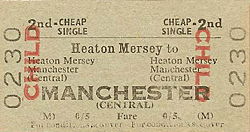 |
Mersey, and they finished on Sunday 4th May 1969 when the very last train services operated out of Manchester Central. The odd freight train continued to pass through the station site during the summer of 1969, but on 17th August the line was disconnected at Chorlton Junction. It was lifted in 1970. After closure Heaton Mersey station was demolished, and the cutting in which it stood was used as a landfill.
Sources: . Lost Railways of Merseyside and Greater Manchester by Gordon Suggitt. Published 2004 by Countryside Books ISBN 13: 978-1853068690 The Midland Route from Manchester Part one – Central to New Mills by E M Johnson Foxline Publications ISBN 1 870119 20 7, Manchester (Rail Centres) by Stanley Hall 2008 Booklaw Publications ISBN 1 901945 29 4 , The Railways Around Stockport by Gregory K.Fox, Foxline Publications ISBN 1 870119 00 2
Other web sites: Peak Rail now providing a regular steam service between Matlock and Rowsley. David Hey's Collection - Transition from BR steam. Includes railway photographer ER Morten's photographic tour from Buxton - Derby.
Eight and a half miles of the Matlock - Buxton line now forms the Monsal Trail starting at Coombs Road Viaduct, one mile southeast of Bakewell and finishing at the head of Chee Dale, about three miles east of Buxton. There is a diversion round the tunnels.
Further reading: Railway from Buxton to Bakewell, Matlock and Ambergate (Scenes from the Past) by JM Bentley, 1992. Railways around Buxton by JM Bentley, 1987.
Tickets from Michael Stewart, route map drawn by Alan Young
To see other stations between Manchester Central & Matlock click on the station name: Manchester Central, Chorlton-cum-Hardy, Withington & West Didsbury, Didsbury, Cheadle Heath, Hazel Grove (Midland), Buxworth, Chinley (2nd site) STILLOPEN, Chinley (1st site), Chapel-en-le-Frith Central, Peak Forest, Cheedale Halt, Buxton (Midland), Blackwell Mill Halt, Millers Dale, Monsal Dale, Great Longstone, Hassop, Bakewell, Rowsley (Second site), Rowsley (First site), Rowsley South PEAK RAIL, Darley Dale, Matlock Riverside PEAK RAIL & Matlock STILL OPEN. See also Stockport Tiviot Dale & Stockport Portwood
Click here for views of the Midland line around Heaton Mersey in 2009 |

mersey_old3.jpg)

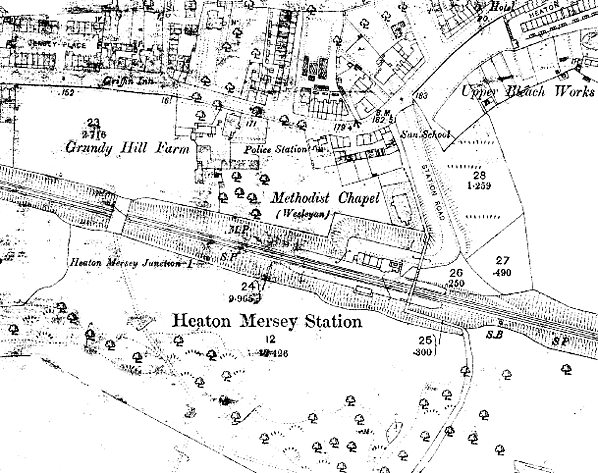
mersey_old4.jpg)
mersey_old1.jpg)
mersey_old6.jpg)
mersey_old7.jpg)
mersey2.jpg)
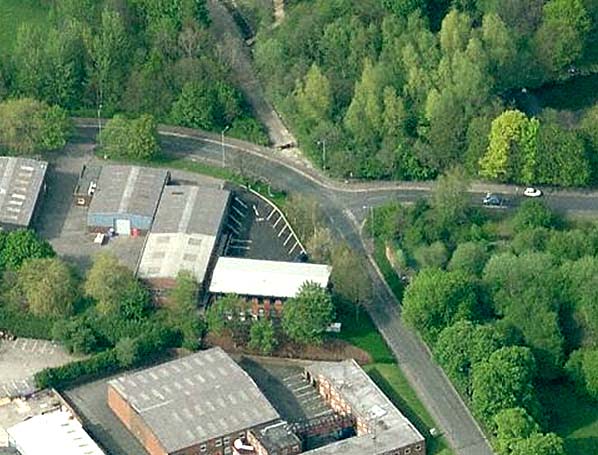


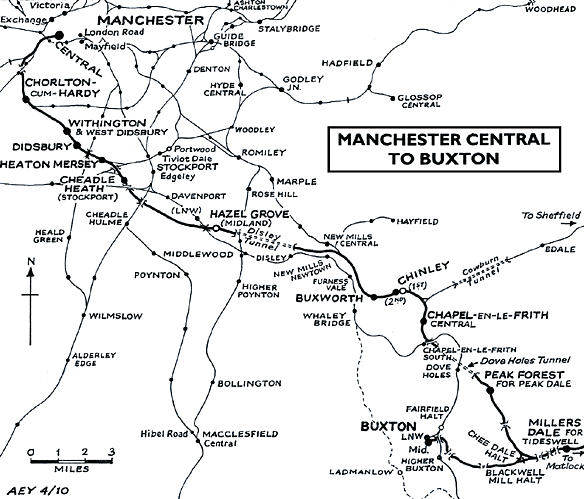





mersey12.jpg)
mersey_old_thumb2.jpg)
mersey_old_thumb5.jpg)
mersey_old_thumb5.jpg)

 Home Page
Home Page